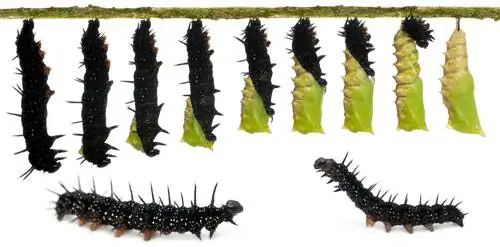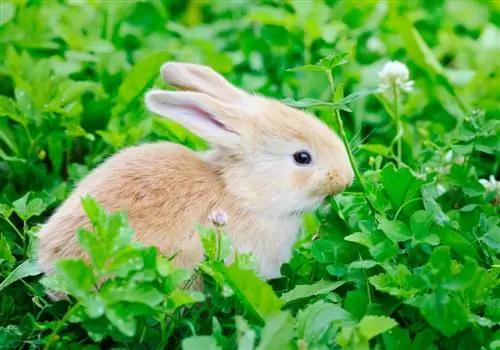- Author admin [email protected].
- Public 2023-12-16 16:46.
- Last modified 2025-01-23 11:22.
The peacock butterfly is a strikingly patterned butterfly that we often encounter in the wild in this country. But it also flutters from flower to flower far beyond our national borders. Its distribution area is surprisingly large, even including cold regions.

Where can you find the habitat of the peacock butterfly?
The peacock butterfly is a butterfly that prefers to occur in sparse forests, flower meadows, parks, gardens and flowering hedges up to altitudes of 2,500 meters. Its distribution area extends across Europe and Asia, avoiding extreme temperatures.
Loves warmth, tolerates cold
All over the Northern Hemisphere, flowers bloom in shades of purple, the favorite color of this butterfly, which is distinctive with colorful eyes on its wings. This would ensure his food. But the different climatic conditions make life not possible everywhere.
So cold is tolerated because the adult butterfly looks for shelter in winter, falls into hibernation and hibernates. But it would not survive very icy temperatures over large periods of the year.
The currently much-discussed global warming could lead to changes in its habitat. At least it can already be observed that the peacock butterfly now manages to send two generations out into the world per year.
Geographic distribution
Geographically, Europe and Asia are the homeland of the peacock butterfly. However, the closer a region is to the North Pole, the less suitable it is as a habitat. For example, the north of Scandinavia is far too inhospitable for him. The butterfly is also not native to Greece and parts of the Iberian Islands. Maybe because it's way too hot for him.
Flowering habitats
In our mountainous country, the peacock eye can be found up to altitudes of 2,500 m. It's too cold higher up, the rest of the country is freely available to him. He flies to where the table is richly laid out for him. He can be found:
- in light, sunny forests
- on colorful flower meadows
- in cemeteries, parks and gardens
- in populated areas, gardens
- near flowering hedges
Tip
From butterfly breeders and the BUND you can get caterpillars of this butterfly species to breed at home, so your habitat also becomes its habitat. At least until the moth hatches.
Fodder plant nettle
The wide distribution area of this butterfly is also due to the fact that its caterpillars are specialized on a food plant that grows everywhere and is “ineradicable”: the stinging nettle.
If you want to turn your own garden into a butterfly sanctuary, you should leave a few nettles hidden somewhere. The lifespan of the butterfly is between 1-2 years. Nettles ensure the emergence of new generations. You can read more interesting information about the peacock butterfly in our profile.
Tip
Provide the adult peacock butterfly with plenty of nectar by planting the following plants in the garden: blue cushions, dahlias, thistles, buddleia, sweet pea and thyme.






